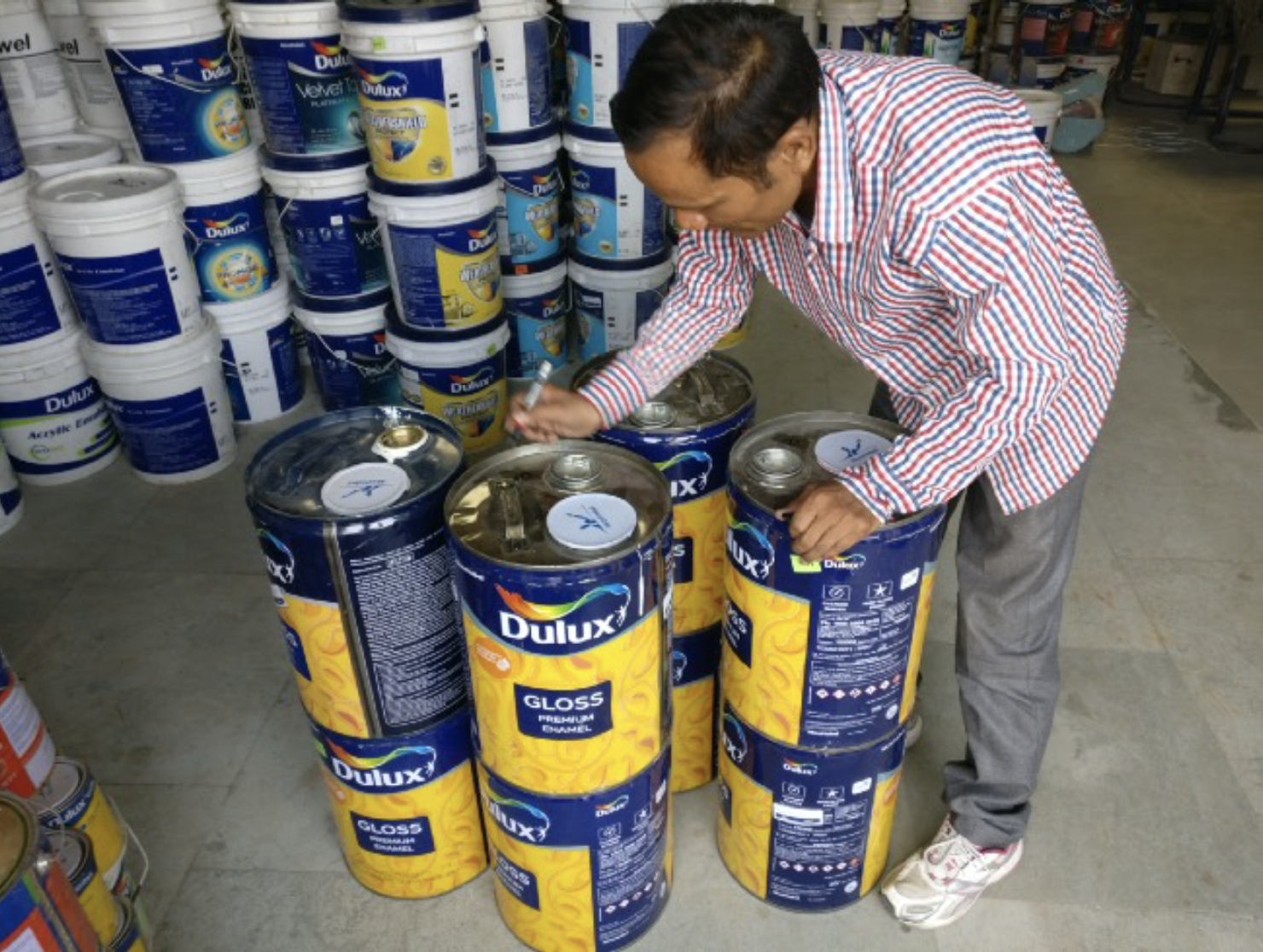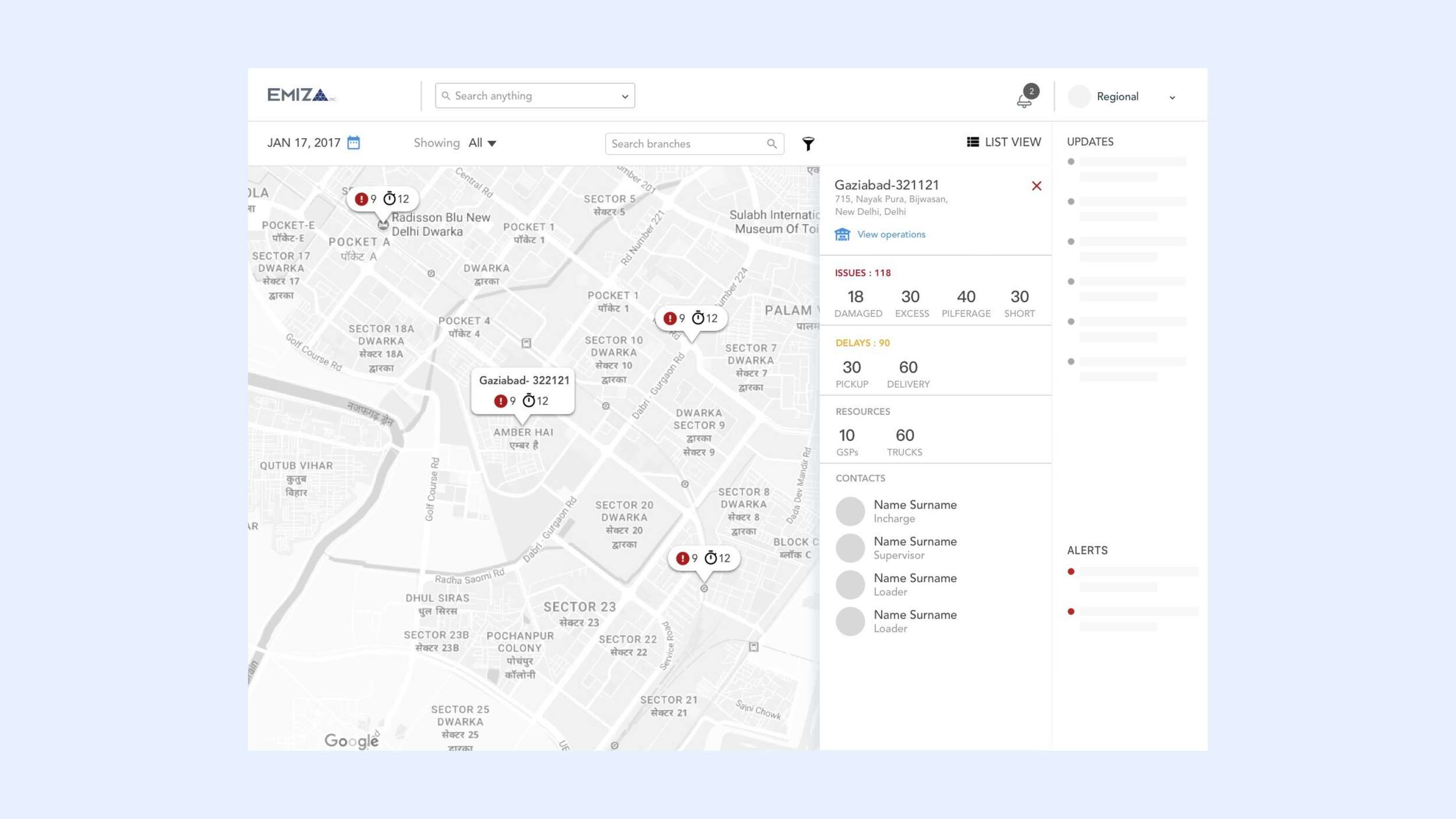Building a supply chain platform from scratch to reduce revenue leakage by 86%
Role
UX Researcher and Architect
Team
Client + Partner Agency
Duration
~ 9 months
🚀 TL;DR
I led UX design for a logistics platform that unified warehouse operations, fleet tracking, billing, and planning workflows—replacing a US-based off-the-shelf solution that didn’t fit India’s on-ground realities.
Through deep field research, role-specific workflows, and trust-driven design, the product led to a 70% drop in support calls, reduced revenue leakage by ~86%, improved transparency, and gave Emiza a competitive edge as Airtel’s iPhone X distribution partner.
Scope and deliverables
We focused on the Research, UX strategy, IA, workflow design and testing. The final deliverable was a set of high-fidelity 'blueprints' (wireframes) that the client's UI and development partners used to build the final product.
Research & discovery
The Challenge
When we arrived on-site at the Delhi warehouse, we were met with a wall of skepticism. The staff were quiet, wary, and distrustful. What began as a straightforward system redesign quickly revealed deeper, human-centered challenges. I knew then that our first task wasn't to design a system, but to earn their trust.
Building Trust
We shifted our strategy. We put away our notepads, rolled up our sleeves, and spent the first two days working alongside the team—helping move boxes, joining them for chai and jalebis, and simply being present.
Break-through
By mid-week, the dynamic had completely changed. With that foundation of trust established, conversations began to flow, and the team started opening up about their real, day-to-day frustrations. This allowed us to conduct our formal research, which included — Contextual inquiries and Informal interviews with 6 user groups.

Interviewing Billing and Management Team

Interviewing Business Analyst

GSP creating a Docket during Pickup

Marking consignment with codes
Uncovering the insight
Back in our Pune office, the team and I dove into the mountain of observations, photos, and voice notes from our week on-site. Using affinity mapping, we clustered hundreds of data points by user role, friction points, and daily behaviors.
A powerful pattern began to emerge. We saw that many employees had seen software come and go with little benefit to them, and some even saw it as a threat to their job security. It became clear that the resistance we felt wasn't about the technology itself.
Technology wasn't the blocker—distrust was.
Redefining the core problem
This single insight that we needed to solve for distrust, not just for features, reframed our entire approach. Every solution that followed was guided by a new, more powerful question:
What will help this person feel in control, not exposed?
Quick Sketch that I created to Illustrate need of Multiple Platforms
Building Trust with Ground Staff
Why It Mattered
GSPs and ops staff believed the new system would replace them or expose their errors, leading to low adoption.
What I did
Involved them directly in the design validation process to give them a sense of ownership.
Introduced guided flows to reduce mistakes, not punish them.
Proposed gamified incentives to reward accuracy, not just speed.
Impact
Adoption increased as staff began to take ownership of the app instead of avoiding it.
Reducing Calls by Creating a “Single Source of Truth”
Why It Mattered
Teams were constantly chasing information through phone calls and spreadsheets, creating a culture of reactive problem-solving.
What I did
Mapped end-to-end workflows for each user group
Designed a smart notification and system to push the right information to the right people at the right time
Impact
Reduced the need for chasing information, which allowed operations to run more smoothly and significantly lowered support tickets
Simplifying Training for a High-Churn Workforce
Why It Mattered
Ground staff (GSPs) changed frequently, training was inconsistent, and new staff made avoidable mistakes.
What I did
Broke all tasks into small, guided steps with clear visual cues
Automated manual data entry wherever possible
Ensured offline access, so work wouldn’t halt during poor network conditions
Impact
New GSPs became productive faster with fewer errors, giving managers more confidence in new hires
Preventing Malpractices Without Harming Morale
Why It Mattered
Leadership needed to control misuse of the system for personal shipments, but without creating a culture of fear or surveillance.
What I did
Introduced system checkpoints that ensured end-to-end traceability
Designed a low-cost barcode seal system for locking truck doors
Made delivery handoffs digitally verifiable, even in remote locations
Impact
Revenue leakage dropped, and audit transparency improved, without making users feel constantly watched
Creating a “Smart Planning” Tool for Operations
Why It Mattered
Warehouse managers were using WhatsApp, whiteboards, and phone calls for daily shipment planning — a chaotic and inefficient process.
What I did
Created a drag-and-drop Planning Board based on zones, vehicle type, and volume
Made the interface tablet and touch-friendly for use on the go
Allowed for smart filtering and scheduling
Impact
Enabled better planning, fewer missed pickups, and better resource utilization. This significantly reduced operational cost.





Giving Regional Managers Actionable Dashboards
Why It Mattered
Regional Managers had no clear, real-time view of where delays were happening across multiple locations.
What I did
Created a dashboard tailored to their role, surfacing relevant KPIs
Focused on trend-based data and exceptions, not just raw numbers
Designed the interface to support proactive planning instead of reactive fixes
Impact
Managers could now act quickly on patterns, assign help where needed, and reduce micromanagement.
Streamlining the Billing & Payment Workflow
Why It Mattered
The billing process was disconnected from actual shipment flows, forcing teams to rely on WhatsApp updates and manual tracking.
What I did
Linked pickup and delivery statuses directly to billing workflows
Made payment checkpoints actionable inside the system
Reduced dependency on manual proof-sharing and offline handovers
Impact
The billing team could now raise invoices faster and with fewer errors, leading to better cash flow.


Simplifying End-to-End Consignment Tracking
Why It Mattered
Support teams received constant calls from clients asking, “Where is my shipment?” due to a lack of real-time visibility.
What I did
Designed an intuitive tracking system with clear, real-world status stages
Enabled proactive alerts to reduce the need for inbound calls
Impact
Support tickets dropped significantly as customers gained clarity and internal trust in the system went up.





Business impact
📉 Revenue leakage and support calls reduced by over 70%
📲 Increased app usage and reduced training dependency
🤝 Smart suggestions reduced operations cost
📦 Real-time visibility and unified workflows across the org
It gave a competitive edge to Emiza. Emiza became Airtel's fulfilment partner for India and distributed the Apple Bestseller ‘iPhone X’.
He seamlessly connected all touchpoints across Cloud App, Mobile App, and Shipment tracking websites. His carefully crafted solution was Tailor-made for our Business and fulfilled our Business Objectives. I recommend him for any UX design work and look forward to working with him in the future.
— Ajay Rao, CEO, Emiza
What I learned
Adoption isn’t about features—it’s about trust
The most significant barrier we faced was human, not technical. Earning the trust of the ground staff was the key that unlocked the entire project's success.
Simple solutions can solve critical problems
A low-cost, trackable plastic seal proved to be a more effective and pragmatic solution for preventing revenue leakage than a complex, digital-only system would have been.
True user empathy is built on the ground
Sharing chai and jalebis with the team was more valuable than any formal meeting. It was a powerful reminder that you have to understand the human context to design products that truly work.













